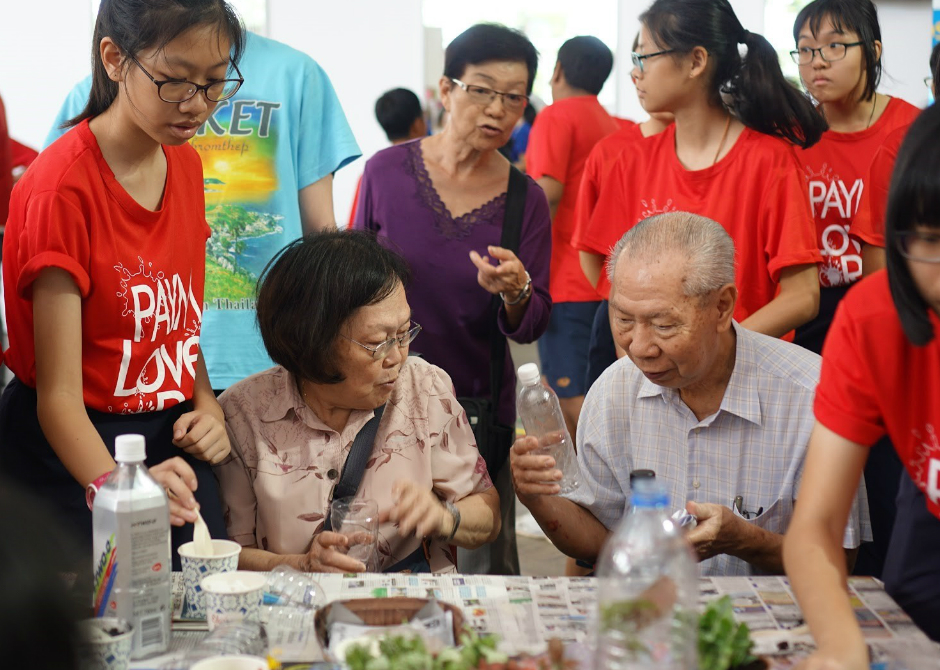What inspires you to teach?
I remember one of my English classes which comprised a small but feisty group of girls – they were vocal about typical teenage issues like friendship problems and school stress and were also staunch feminists who believed in gender equality. When we got the opportunity to explore social causes and volunteerism while learning how to write arguments, I thought about curating the reading material so that it would better resonate with them.
Knowing my girls would very likely be moved by something that called out to the feminists in them, I quietly tucked an article on period poverty among others and crossed my fingers.
They did not disappoint.
While the students were supposed to take turns to present on their assigned article or video to the class, we spent the most time on the period poverty feature. The discussion was animated – they were taken aback by the extent of this issue for the less fortunate in society and intrigued by the women who took up this cause.
In fact, they were so inspired that one of them launched a Values in Action project with her CCA a few months later. As a media club, they created a series of videos to raise awareness of this issue among their schoolmates. The student also led her CCA to organise a donation drive for pads to contribute to the cause.
“Apart from equipping our students with the language skills to better express themselves, our classrooms are also a space for our students to care and be cared for.”
Ms Sum Kar Mun
Going the extra mile for my students isn’t a stretch if I think about how my own teachers did the same for me in my youth. At junior college, we would put in extra hours after school for projects or to revise for our exams, and my Theatre Studies & Drama teacher would bring cookies – chocolate chip ones – to stave off the hunger pangs he knew we must have been having.
Today, when I think of the care of a teacher, I think of those cookies fondly.
Apart from equipping our students with the language skills to better express themselves, our classrooms are also a space for our students to care and be cared for. Through our efforts, they can also learn about what matters to them, issues they have a passion for, and realise their ability to do something about it.
Describe a teaching approach you have found effective.
For me, hands-on experiences and authentic contexts can support more effective teaching and learning.
To help students remember that good writing requires them to consider the purpose, audience and context carefully, I look for opportunities to assign authentic tasks in English. This includes completing the Caring Teacher Award nomination form, for example. Knowing that their writing meets real-world objectives and could have tangible outcomes encourages them to craft more thoughtful responses.
Together with the Character and Citizenship Education (CCE) team, I have also witnessed the importance of experiential learning. We plan and adapt lessons to include activities from simulation exercises related to visual impairment to a group task of building the tallest tower using limited materials given.
.jpg)
These make for richer learning experiences that students can reflect meaningfully on, and they are often able to articulate important lessons learnt. At Secondary 3, our students take part in a Work Exposure Programme that encourages them to explore an industry or join a company for a week to make informed post-secondary decisions. We partner with a range of organisations and companies to provide the students with this hands-on learning opportunity that gives them a taste of the working world.
Which school initiative are you especially proud of?
We noticed that in recent years, students started sharing more concerns they had about managing their own well-being and their worries about friends dealing with negative thoughts. We cover these topics in CCE lessons and have welfare representatives in every class who support their friends and plan bonding activities. But we were wondering what more we could do.
Thus, Project HERO – an initiative looking into student well-being – was born. We trialled Mindfulness Mondays last year, which saw students trying out breathing exercises in class with their form teachers and mindful walking activities around the school.
There was also a wellness roadshow with experts. Together with partners from the National Healthcare Group, we planned a range of activities for the students to participate in during recess one day. Students took on a cone-hopping challenge at a booth focused on physical well-being and collected stickers with positive messages that were designed by a member of staff. There was also a gratitude corner set up where students could write cards to show appreciation to their friends and teachers in school.
Next, we put together a Wellness Journal in partnership with a few other secondary schools as a resource students could use to practise mindfulness and engage in various activities this year. Some students with issues managing their negative thoughts have found it a very useful resource and were sharing with me about how they enjoy the pages dedicated to colouring and reminders about breathing exercises. While the students and teachers are still exploring the book, I am encouraged by the students who have found it meaningful and are learning strategies to better support themselves and look after their own well-being.



.jpg)


